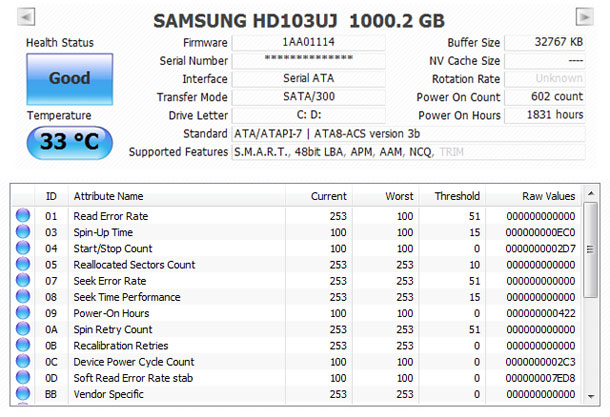
Not all computers or laptops allow the use of an NVMe drive due to the lack of an available NVMe port.

The NVMe port, if available, is a small port that can go undetected. Mac users can easily check the SMART status of their hard drives and internal disk storage by using Disk Utility in Mac OS, offering a simple way to see if the disk hardware itself is in good health or is experiencing a hardware issue. How can you check the health of your Mac's SSD It's easy Just a few minutes in the Terminal app, and you'll be able to find out. First, determine whether you want an NVMe or SSD, but be sure it can be supported on your device. Moreover, you can click on S.M.A.R.T to get more technical details about your SSD. Step 3: Youll see the health status besides Health. Step 2: Launch the software and select the SSD from the above tab.
#MAC SSD HEALTH TEST INSTALL#
Upgrading your storage device to an SSD is a pretty easy task. To check the SSD health using SSD Life, follow the steps below: Step 1: Download and install SSD Life on your PC. But from an older HDD to an SSD, you'll certainly feel a night and day difference, as will you upgrading from an older PCIe standard to a newer generation. The benefits are minimal upgrading from SSD to SSD, especially because they are fast already (but you will see a difference between PCIe SSD generations). Hard Disk Sentinel also offers a benchmarking tool that alerts you of performance degradation. Hard Disk Sentinel is compatible with SSD and can help you find, test, diagnose, and repair various SSD problems. In some cases, you'll reap more benefits from upgrading your memory than upgrading an SSD, especially to a PCIe 4.0 SSD. It’s another best disk monitoring tools on Windows, Linux, and Dos. While upgrading your memory can improve responsiveness, upgrading your SSD can drastically change the performance of your computer.Ĭommon speeds for an SSD are anywhere from 300-600MB/s for both read and write speeds.


Luckily, many parts that become dated can be replaced with newer components, resulting in better performance. You can check your SSD health (or hard drive health) with S.M.A.R.T. As technology progresses every day, the technology in your computer becomes dated quickly.


 0 kommentar(er)
0 kommentar(er)
